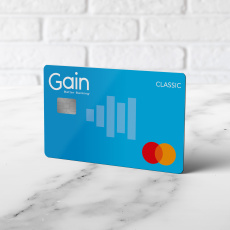Independent Advantage
The Better Banking Class For Teens
The Independent Advantage program is a series of financial courses for high school students. In a relaxed and fun environment, IA students learn about modern financial concepts. These skills are critical to well-rounded adult life. Independent Advantage graduates are set up with real-world tools for real-world finances.
Independent Advantage will educate your teen on:
- Importance of credit and how to use it wisely
- The value of a credit score and how to maintain it
- How to create short and long-term financial goals
- How to budget their money
- Proper use of credit cards, debit cards, and electronic financial systems
- How to maintain financial records and balance a checkbook
- How to identify fraud and protect your accounts
- AND SO MUCH MORE!
Independent Advantage graduates are set up with real world-tools for real-world finances. Upon completion of the courses series graduates receive:
- Checking account with a free box of checks
- Mastercard debit card
- Electronic access to their accounts
- Opportunity to apply for a low-limit credit card
But the benefits of Independent Advantage don't only come in the classroom. IA also provides:
- Eligibility for Gaining Ground Scholarships for college
- Merit Badge Certification for Boy Scouts of America
- Merit Badge Certification for Girl Scouts of America
- Ambassador programs in our local schools
- Gain Internships for our NAF Business Academy students
The Better Banking Podcast: Independent Advantage
This is just one episode of The Better Banking Podcast. Download all episodes to hear more!
Subscribe on Apple Podcasts
Subscribe on Google Podcasts
Follow us on Stitcher
Follow us on Spotify
The Better Banking Podcast: Independent Advantage
This is just one episode of The Better Banking Podcast. Download all episodes to hear more!
Subscribe on Apple Podcasts
Subscribe on Google Podcasts
Follow us on Stitcher
Follow us on Spotify
2024 Independent Advantage Calendar
Use the calendar below to find a class for your teen today!
Each course consists of four sessions spread over the course of four weeks. You can choose between in-person sessions at our Burbank branch* or virtual sessions over Zoom. Please do not sign up for both in-person and virtual sessions for the same month as the same content will be covered in both venues.
Classes are free. Students must open a savings account with the Credit Union before the first course. Click here to open an IA savings account.
June 2024
In-Person Instruction**
Tuesdays (5:15 pm - 7:30 pm)
June 4th, 11th, 18th, 25th
Virtual (via Zoom)
Wednesdays (4:30 pm - 6:30 pm)
June 5th, 12th, 19th, 26th
July 2024
In-Person Instruction**
Tuesdays (12:00 pm - 2:00 pm)
July 9th, 16th, 23rd, 30th
Virtual (via Zoom)
Wednesdays (4:30 pm - 6:30 pm)
July 10th, 17th, 24th, 31st
September 2024
In-Person Instruction**
Tuesdays (5:15 pm - 7:30 pm)
September 3rd, 10th, 17th, 24th
Virtual (via Zoom)
Wednesdays (4:30 pm - 6:30 pm)
September 4th, 11th, 18th, 25th
October 2024
In-Person Instruction**
Tuesdays (5:15 pm - 7:30 pm)
October 1st, 8th, 15th, 22nd
Virtual (via Zoom)
Wednesdays (4:30pm - 6:30pm)
October 2nd, 9th, 16th, 23rd
November 2024
In-Person Instruction**
Tuesdays (5:15 pm - 7:30 pm)
November 5th, 12th, 19th, 26th
Virtual (via Zoom)
Wednesdays (4:30pm - 6:30pm)
November 6th, 13th, 20th, 27th
*In-person courses are subject to CDC guidelines. If necessary, these courses may be rescheduled to meet virtually.
**In-person classes will be taught at our Burbank branch.





